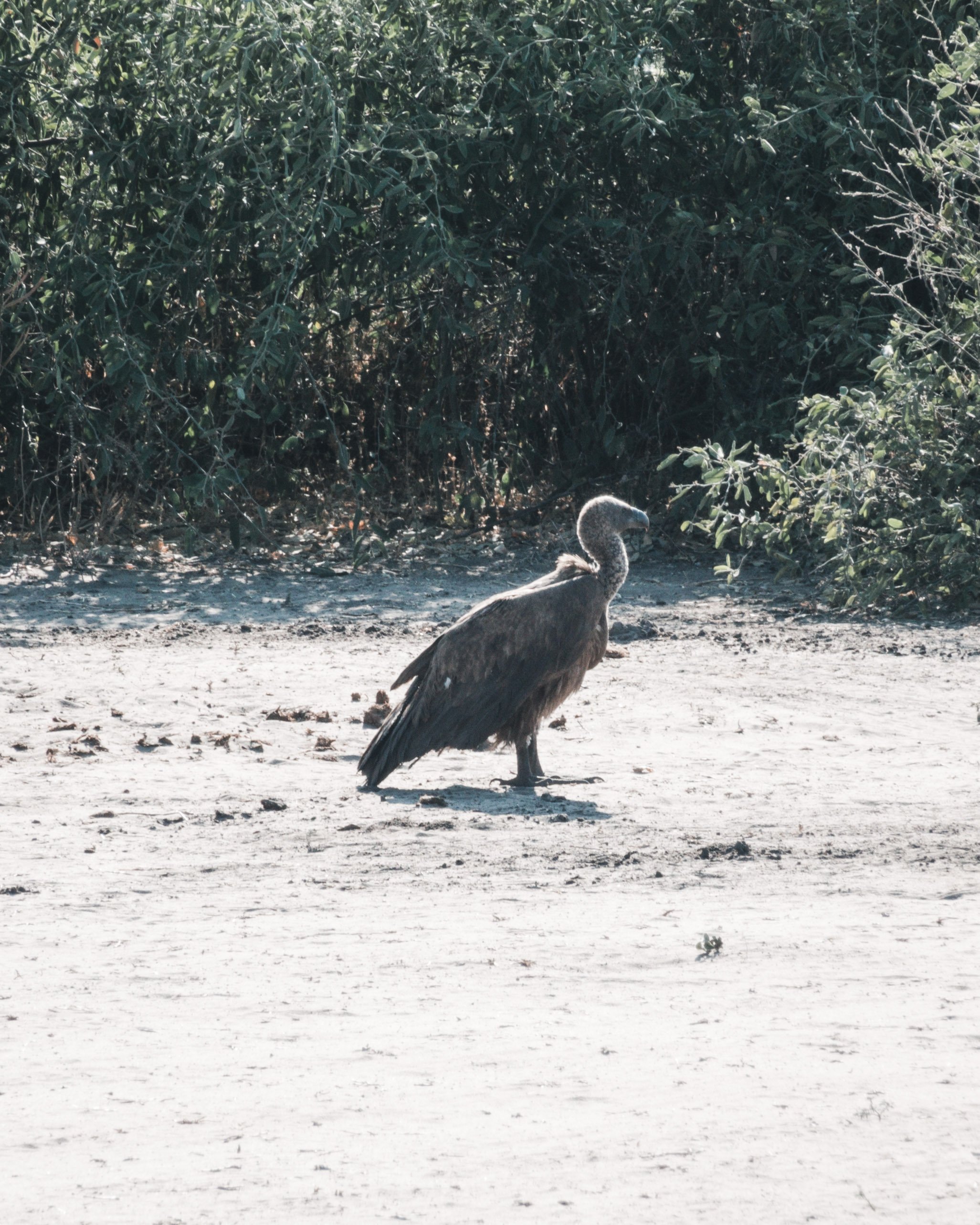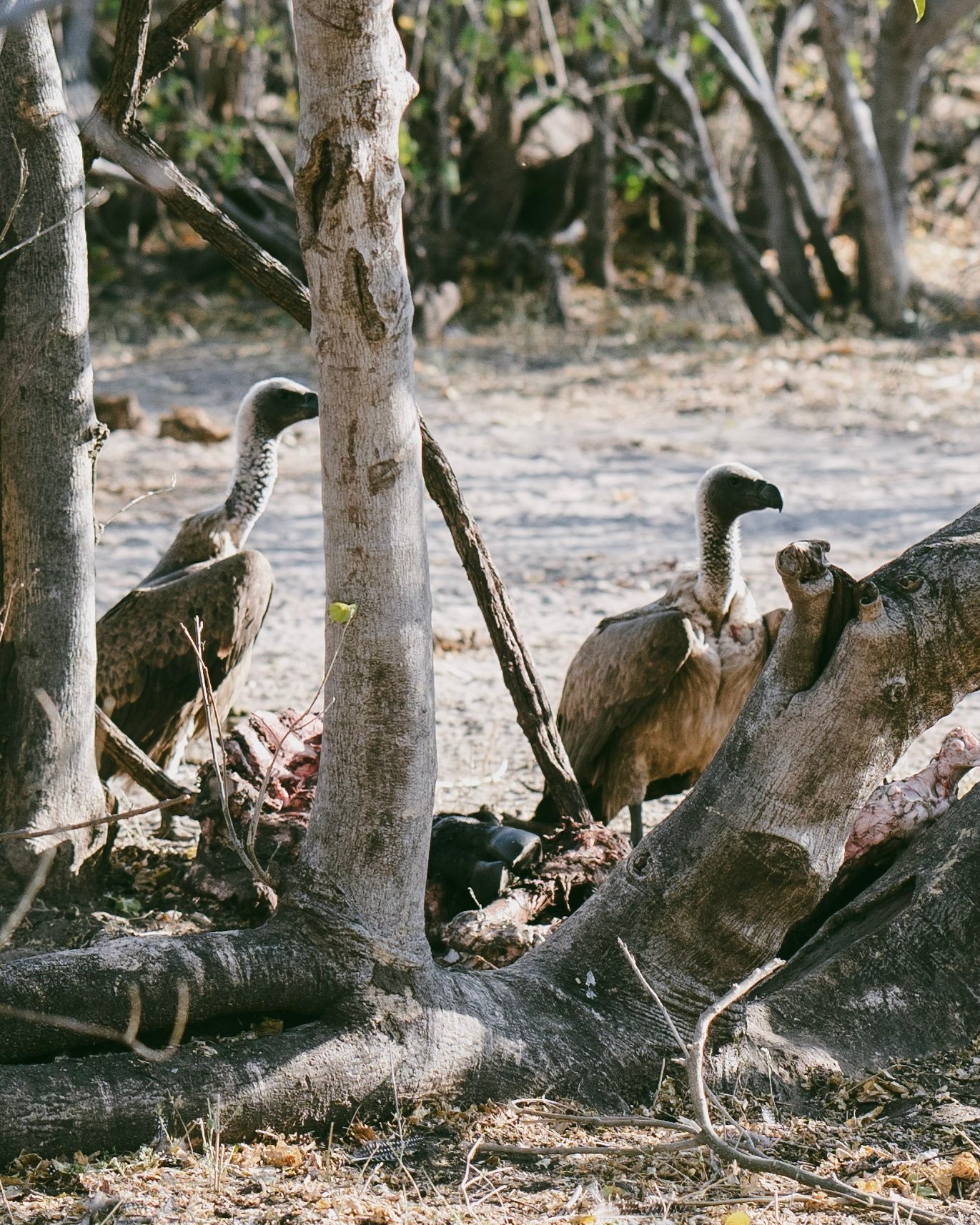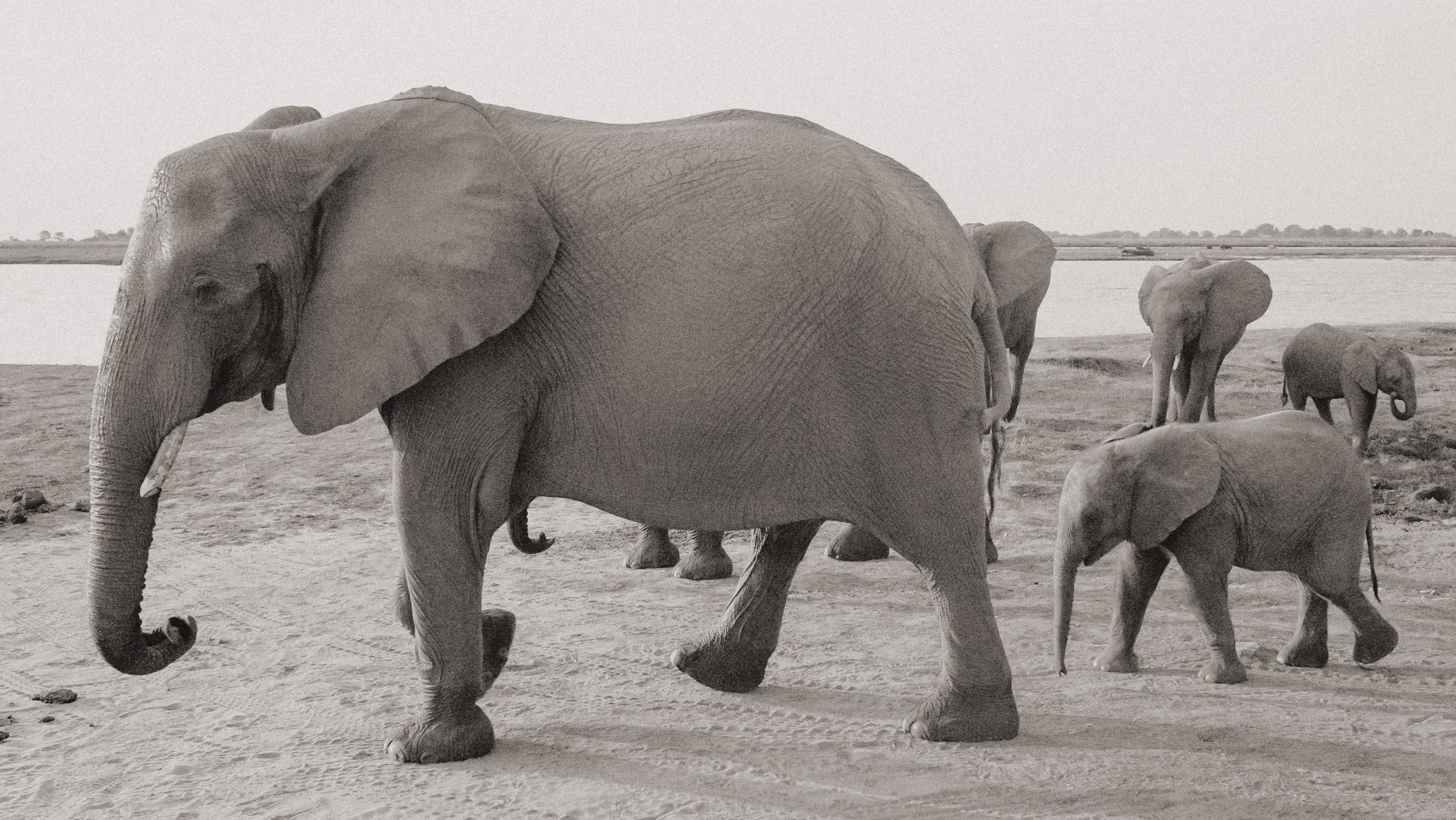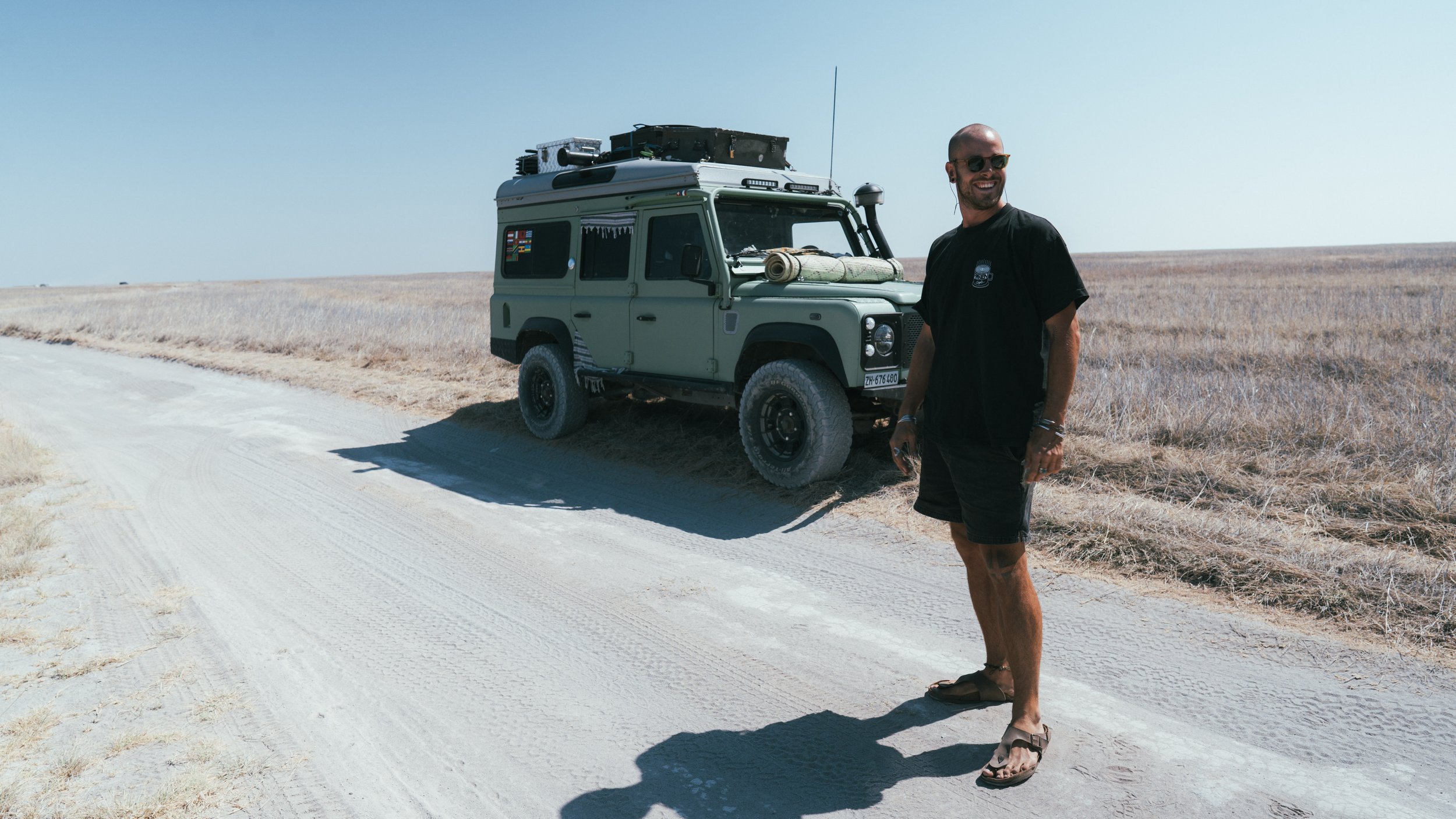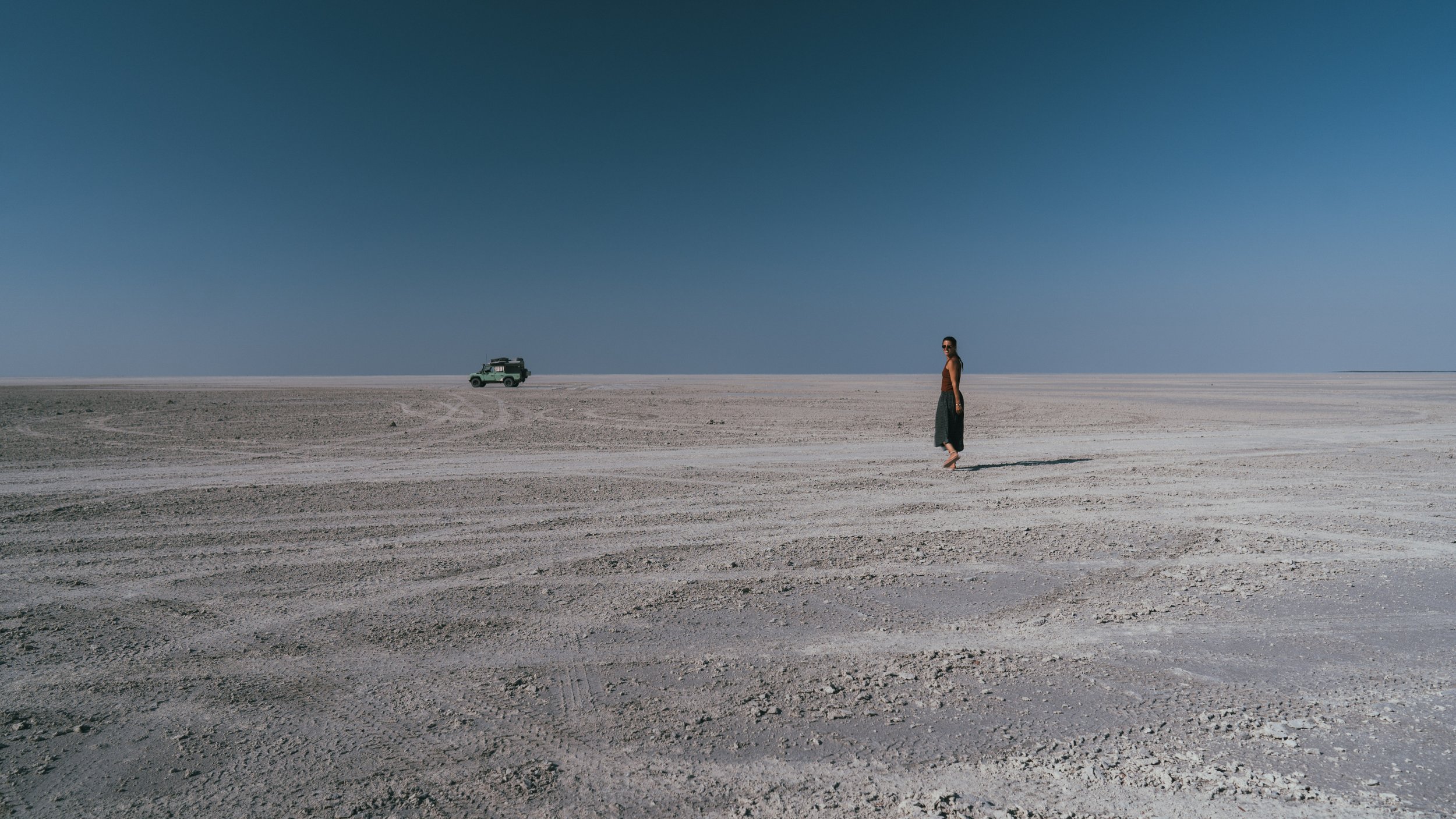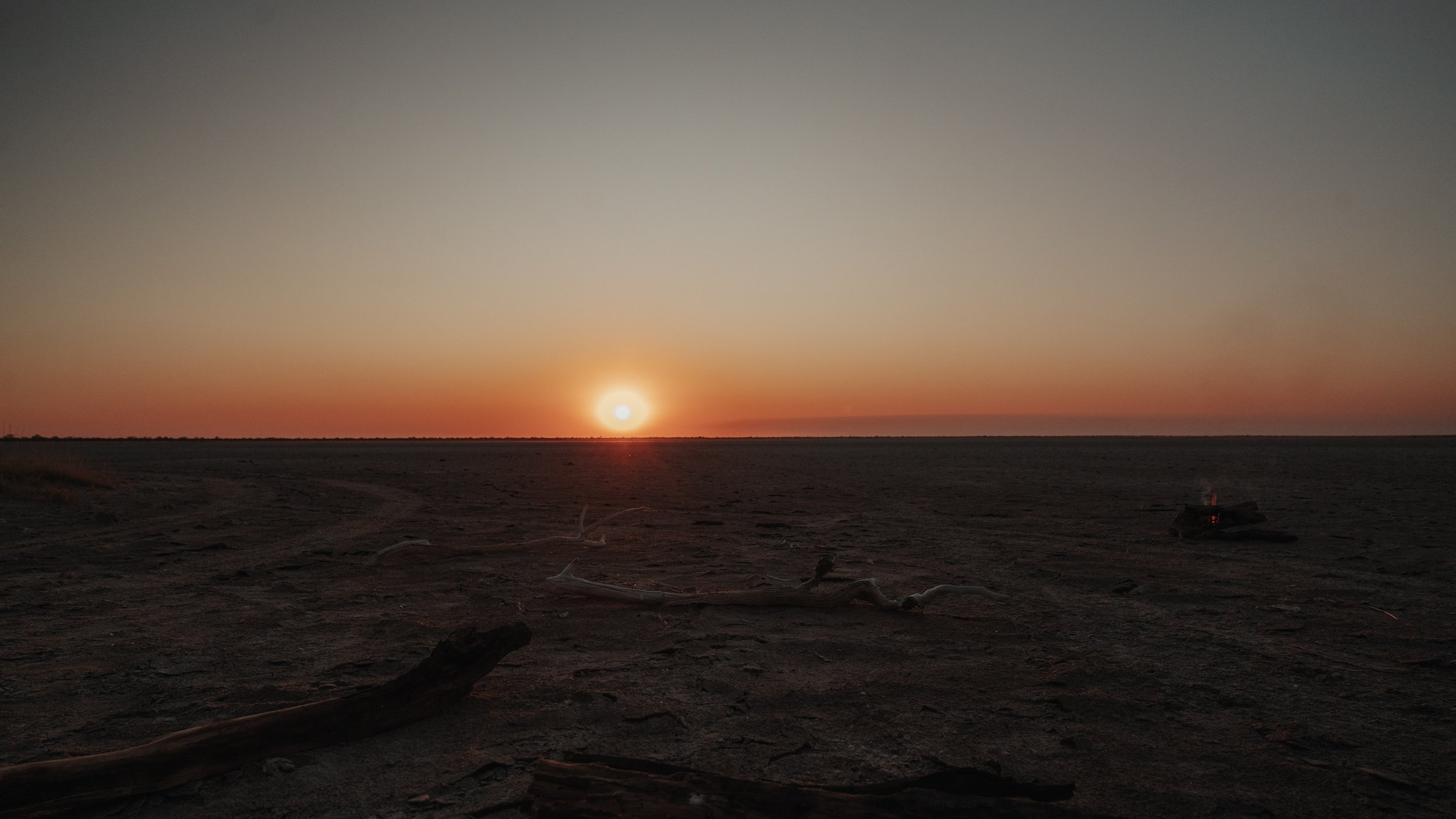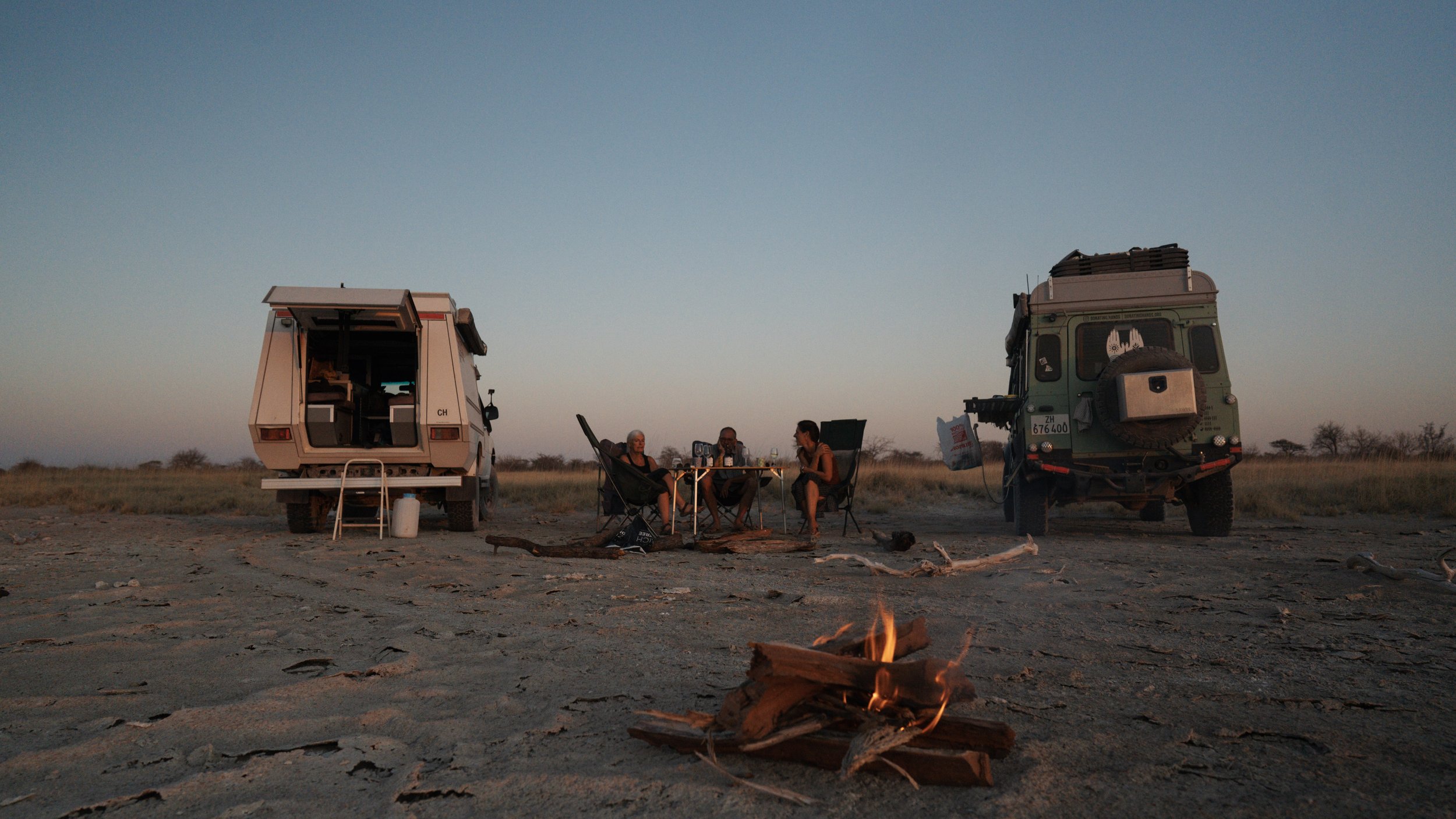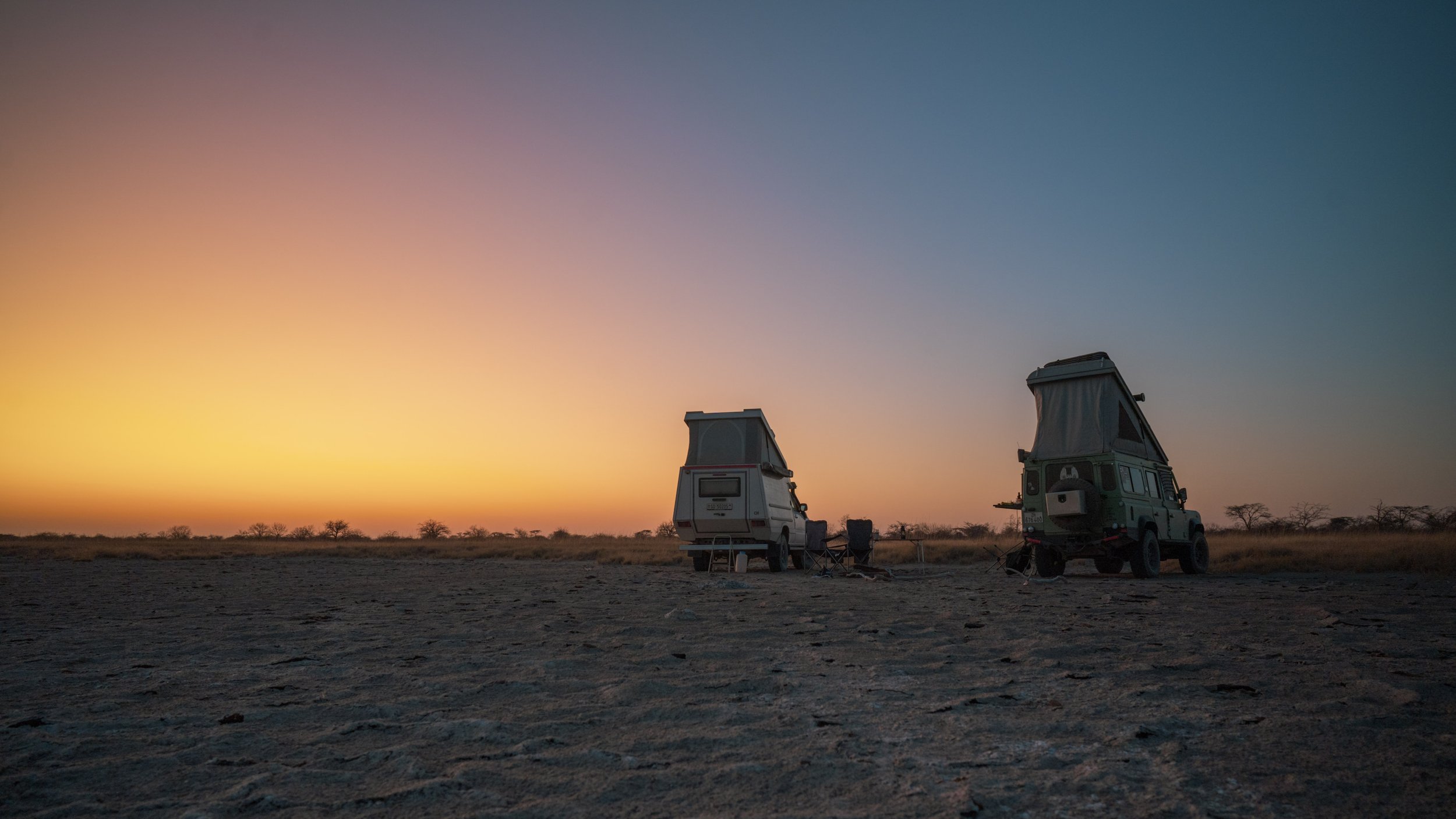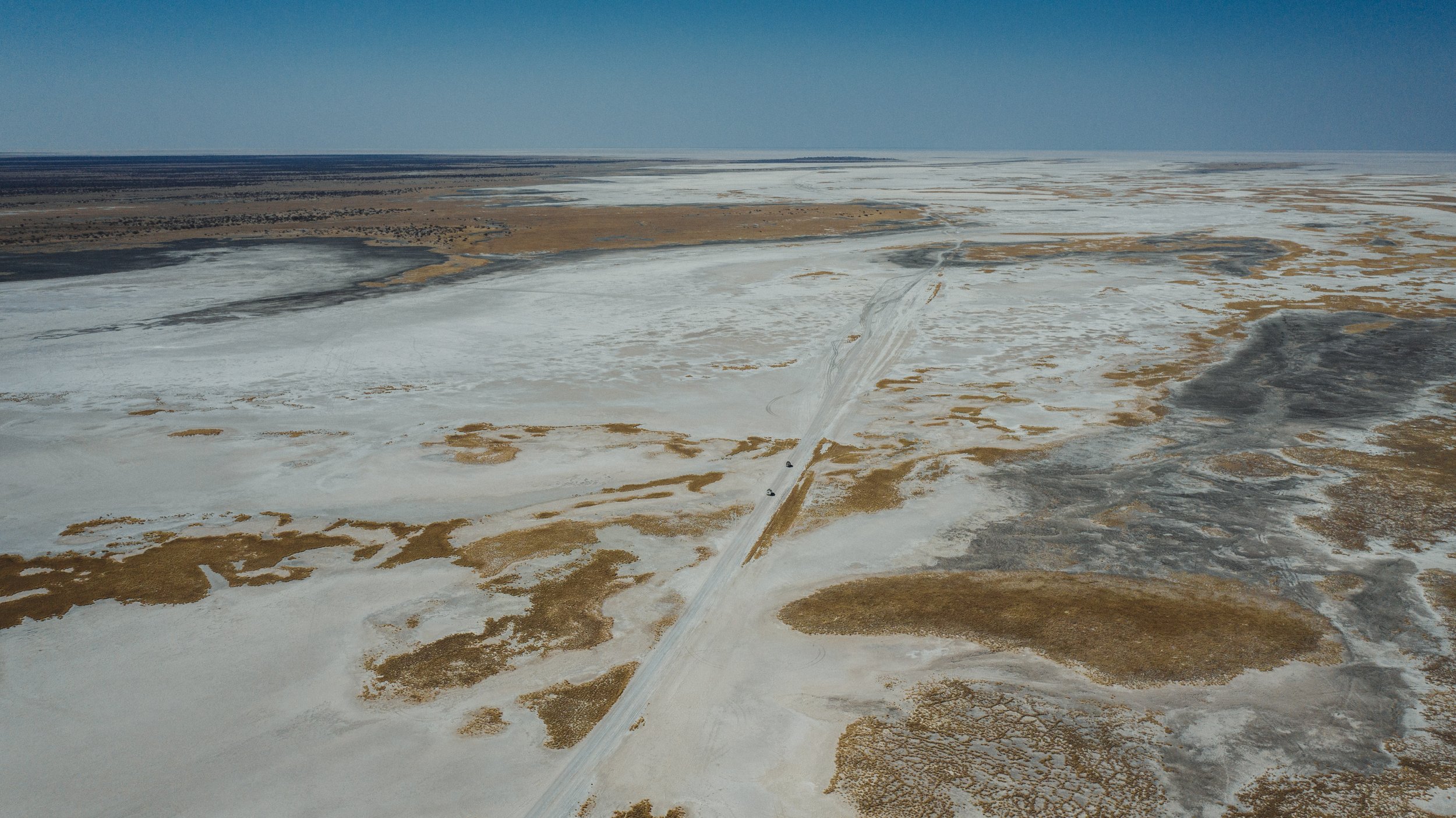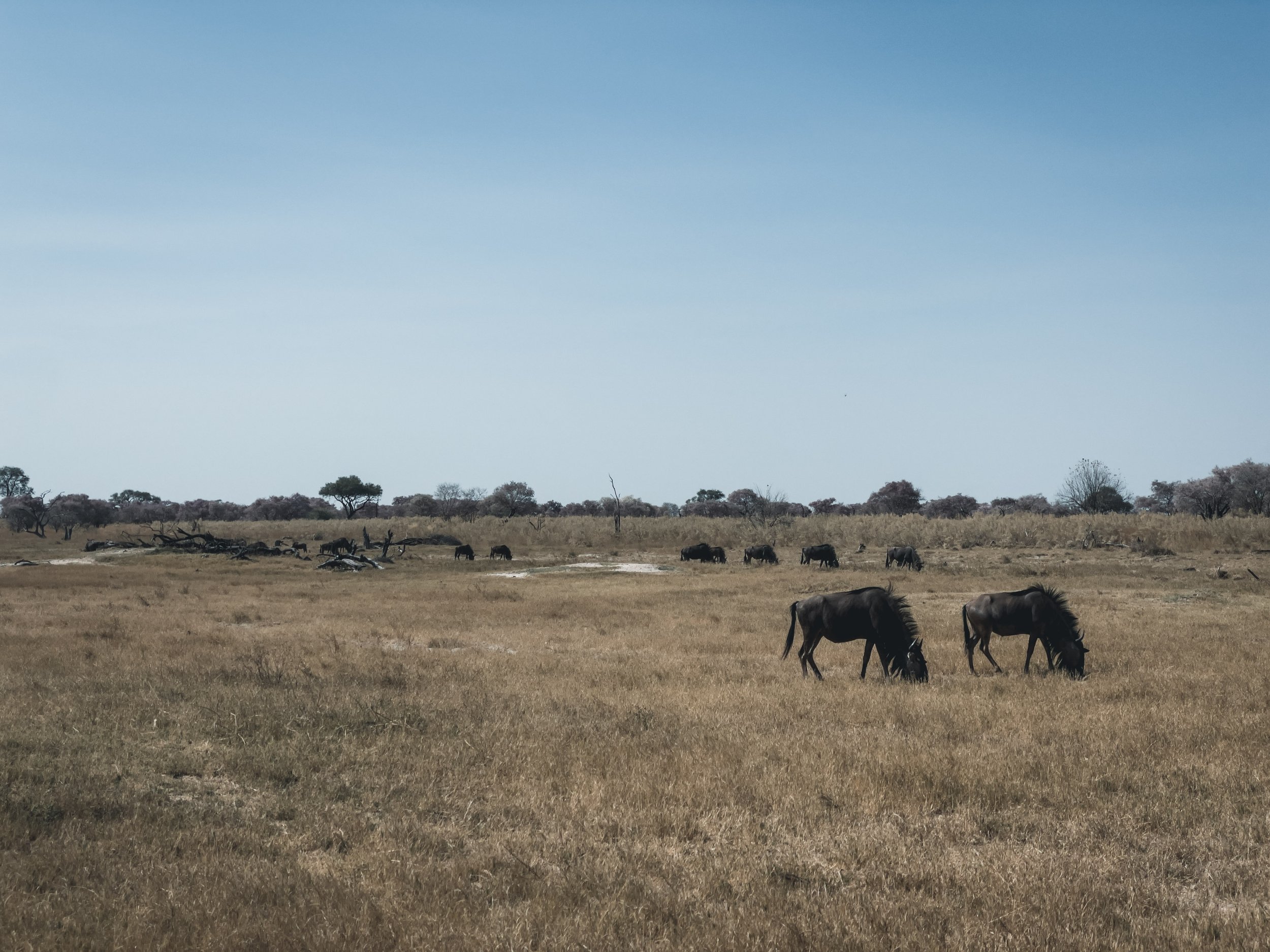Barbara, Urs, Tom and I arrived in Kasane, a town just after the border in Botswana and first went to buy some groceries and a new sim card. There was a little shopping mall where you could get everything, again, a very different picture compared to East Africa. After getting everything we needed for the next few days, we drove to the Chobe Safari Lodge, which is quite famous amongst Overlanders. Luckily they had two spots for us. We decided to stay three nights to have some time to relax beside the game drives we had planned to do in the Chobe National Park. Tom came up with the idea that we could do a game drive with a guide and an open safari vehicle instead of self-driving with our two cars. He quickly went to the reception, and within no time, he had organized a car and driver for the next day for us. It was a great change to sit back and relax for a full day, and we enjoyed our time in the park a lot.
Mike, our tour guide and driver, was very experienced and especially surprised us with his knowledge of all the birds in the park. He knew every name and had a book with him where we could read about them. Whenever we passed a bird, he could tell us its name, including the book page where we could find it. But we did not only see birds; we saw big groups of elephants, one time we passed probably more than 200 elephants at the river, and we saw many hippos and giraffes and zebras and buffaloes as well.
Mike also gave his best to find some lions; he heard that a group had killed two buffaloes the day before, so we went looking for them. We found the two buffalo carcasses; it was stunning how much had already been gone after just a few hours, the vultures were just having their turn on the leftovers, but the lions had already been gone. We kept on looking and instead of the lions we found another carcass of an elephant. This one probably had died due to natural causes, Mike told us, the lions hadn’t touched it, but a lot of other animals had eaten half of this huge animal.
In the late afternoon, we finally found the big group of lions hiding from the sun beneath some trees. It was an exciting and nice safari day, and we learned many new things about Africa’s wildlife. Just before we left the park, there were two young two French guys who asked us for help because they got stuck with their car in the sand. Of course, we helped them, and Mike did a fabulous job pulling them out of the sand again.
The next day we spent at the campsite, where we also had a great view over the Chobe River where many elephants were drinking and bathing, a lovely spot. Also, we met a old friend again: Victor was our neighbour on the campsite, he stopped here as well with his bus on the Interpit-Tour. Besides watching the elephants, we spent the rest of the day making some plans for our upcoming travels in Namibia, where my parents would visit us. Usually, we never planned much of our routes, but when you travel together with other people, it’s good to have a rough plan and we’ve been advised to also pre-book some of the campsites in Namibia, since tourism started to pick up again. Barbara, Urs and of course Victor, who all have traveled around in Namibia told us their favorite spots and routes, which was very helpful.
The following day we continued south to the Elephant Sands Lodge, a lodge and campsite with a huge waterhole where elephants always come by to drink. Charline, the French girl we met in Zambia, recommended this place to us and we weren’t disappointed. Before we even reached the camp, we passed some elephants on the way. It was stunning to observe the countless elephants who came by to stop at the waterhole all day long. They just walked through the campsite which did not have a fence. Another nice surprise was our neighbor: we met Erwin again, the Dutch guy on his motorbike. He joined us for dinner, and Tom cooked his famous chili con carne while I was trying to catch up with our blog and write our experiences but it was hard to not get distracted by all the elephants :)
From Elephant Sands, Barbara, Urs, Tom, and I continued to Nata, a small town, where we made the last stop before driving into the Salt Pans of Botswana. We expected very sandy roads and to get stuck all the time, but we were two cars and had all the necessary gear, so it should not be a problem. When we left the tarmac road, we let some air out of our tires and continued on the sandy roads towards the pans. It had been so dry during the last two months that we had no problems driving around, and we didn’t get stuck once. The dust, however, was a different story. Our cars looked terrible after only a few minutes; everything was white. Since Defenders are not a very dust-free ride, Tom and I tried to cover the doors with some towels to prevent more dust and sand from getting inside, but it was almost impossible to keep it out. We spent some very hot and dusty days, but the views and the unique experience made up for all the struggles. We spent three days in the pans. On day one, we drove to Kukonje Island. To reach it, we had to cross our first salt pan; it was easy to find the way since the tracks on the pan were clearly visible. On our way back, we tried to follow some other trails along the pan instead of driving back to the main road. This, however, did not work out. After a few kilometers, the tracks got lesser and the way very narrow through some thick bushes and then out onto the pan again, where we weren’t sure if we would not get stuck. So after an hour, we decided to turn around and return to the safer main road, which was also a sand road, but at least we were sure it was leading to the next camp where we wanted to spend a night.
The shower that night felt great and we treated ourselves to a dinner at the restaurant. They did not have a lot from the choices from their menu card, but they suggested the burgers, which sounded good and they were indeed very tasteful but unfortunately served a bit cold. Nevertheless, we were ready for a second day out in the pans. Our destination today was Kubu Island. The scenerey was breathtaking, we stopped several times to take some pictures. Our two cars drove smoothly over the pans and we enjoyed our day a lot, eventhough it was very hot. When it was getting a little bit cooler in the late afternoon, we were looking for a spot to wild-camp at the edge of Ntwetwe pan for the night. We spent the most beautiful night with a breathtaking sunset and then cooked under countless stars a nice filet on the fire. Definitely a moment for the books. In the morning, some cows passed through our camp onto the salt pans. Once again we wondered how these animals were able to survive here in this dry area.
The last day, we crossed the biggest of the pans, Ntwetwe, where we camped and stopped at one of the oldest and biggest Baobab trees “Greene’s Baobab”, its older brother “Chapman’s Baobab” unfortunately has collapsed. On our way we saw some ostriches and many other animals, like donkeys, cows and some horses. We spent the night in Gweta on a little campsite, and when we finally arrived, we were exhausted and desperately wanted to jump into a pool, and we would have also loved to drive the Defender into the pool as well, it was beyond dusty. But there was no car wash close by, and our ongoing route was still on sandy roads, so we only did a quick brush-up of gthe car. “Embrace the dust” was our motto once more, but the three days in the pans had exhausted us. We were all in need of some time to rest and recharge out batteries again. Still, we decided to continue one more day and drive through the Makgadikgadi National Park the next day to reach the Bobeti River Campsite, which was supposed to be lovely and a better spot to rest for a couple of days.
When we entered the National Park the next day, deep sandy roads welcomed us again together with very thick bushes, so it was impossible to see any animals. We were already slightly disappointed and questioned our plans, but after 30 kilometers, we arrived at the very low but not completely dry Bobeti River. Probably every single animal of this national park was in this river bed. We saw thousands of zebras, hundreds of Gnus, and dozens of elephants. Some vultures were drying their feathers while impalas were jumping around. Hippos came out of the water, and even an ostrich took a sand bath next to the river. It was unreal! We drove up and down the river bed between the countless animals, and once more, we were amazed at how every game drive is so special and unique every single time; you cannot get tired of it. Exiting the park, we crossed the Bobeti River to reach the campsite. It was a rather deep river crossing; thankfully, there was a local who could tell us where to drive through it. We managed and could set up our camp under the shade of some nice trees. For dinner, we had a pre-cooked bolognese I prepared the day before, and Tom installed our camping cinema so we could watch a movie. We decided on “A united kingdom,” a beautiful true story from Botswana about their king. He married a white English lady, and how they fought for their love and prevented the terrible apartheid from South Africa from swapping over to their country. A beautiful movie night under the countless stars of Botswana.









